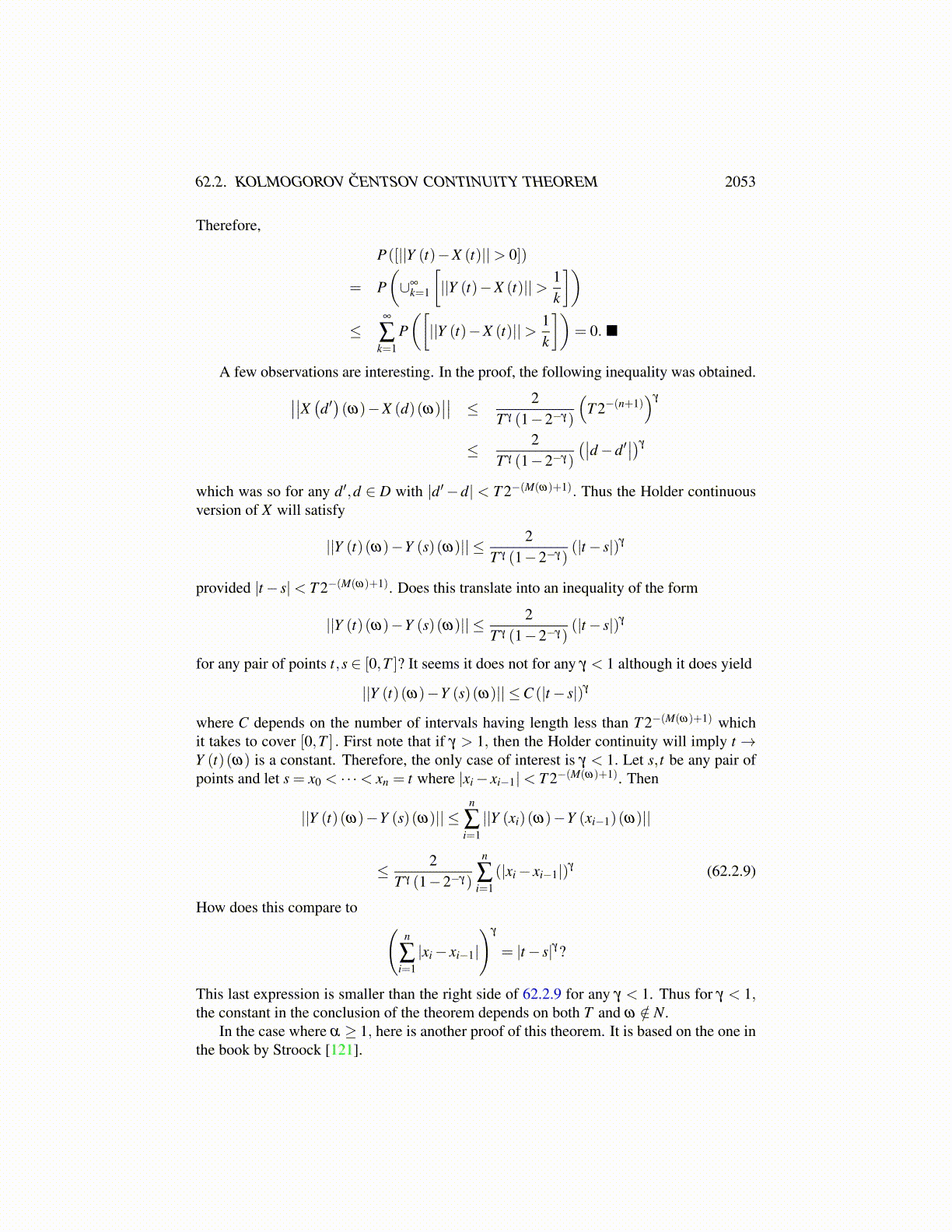
62.2. KOLMOGOROV ČENTSOV CONTINUITY THEOREM 2053
for large enough n ≥ M. Just pick the first n such that T 2−(n+1) < |d−d′| . Then from62.2.4, ∣∣∣∣X (d′)−X (d)
∣∣∣∣ ≤ (2T−γ
1−2−γ
)(T 2−(n+1)
)γ
≤(
2T−γ
1−2−γ
)(∣∣d−d′∣∣)γ
Now [0,T ] is covered by 2M intervals of length T 2−M and so for any pair d,d′ ∈ D,∣∣∣∣X (d)−X(d′)∣∣∣∣≤C
∣∣d−d′∣∣γ
where C is a suitable constant depending on 2M .For γ ≤ 1, you can show, using convexity arguments, that it suffices to have C =(
2T−γ
1−2−γ
)1/γ (2M)1−γ
. Of course the case where γ > 1 is not interesting because it wouldresult in X being a constant.
The following is the amazing Kolmogorov Čentsov continuity theorem [78].
Theorem 62.2.2 Suppose X is a stochastic process on [0,T ] . Suppose also that there existsa constant, C and positive numbers, α,β such that
E(||X (t)−X (s)||α
)≤C |t− s|1+β (62.2.5)
Then there exists a stochastic process Y such that for a.e. ω, t → Y (t)(ω) is Hölder con-tinuous with exponent γ < β
αand for each t, P([||X (t)−Y (t)||> 0]) = 0. (Y is a version
of X .)
Proof: Let rmj denote j
( T2m
)where j ∈ {0,1, · · · ,2m} . Also let Dm =
{rm
j
}2m
j=1and
D = ∪∞m=1Dm. Consider the set,
[||X (t)−X (s)||> δ ]
By 62.2.5,
P([||X (t)−X (s)||> δ ])δα ≤
∫[||X(t)−X(s)||>δ ]
||X (t)−X (s)||α dP
≤ C |t− s|1+β . (62.2.6)
Letting t = rkj+1, s = rk
j ,and δ = 2−γk where
γ ∈(
0,β
α
),
this yields
P([∣∣∣∣∣∣X (rk
j+1
)−X
(rk
j
)∣∣∣∣∣∣> 2−γk])≤C2αγk
(T 2−k
)1+β